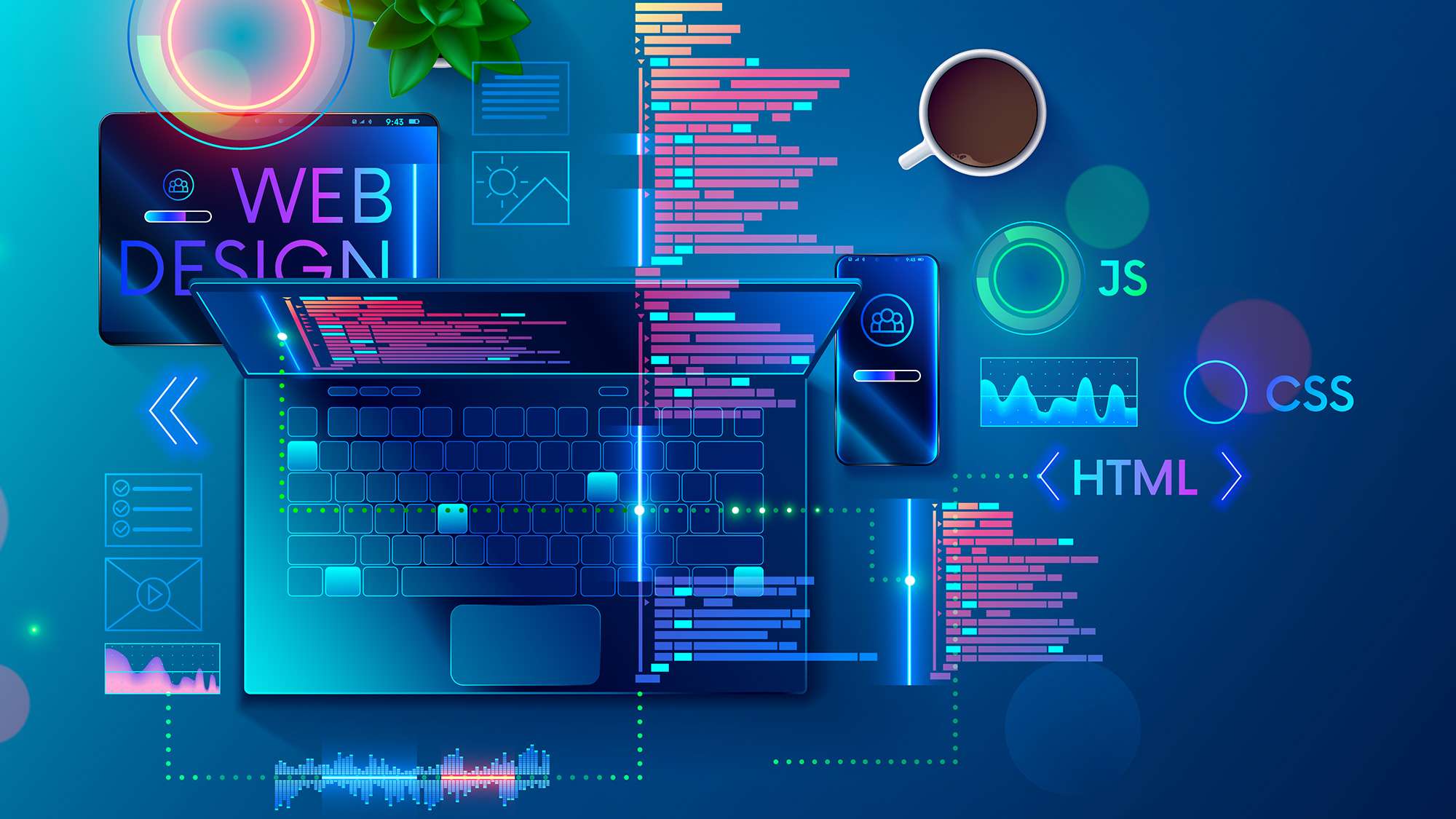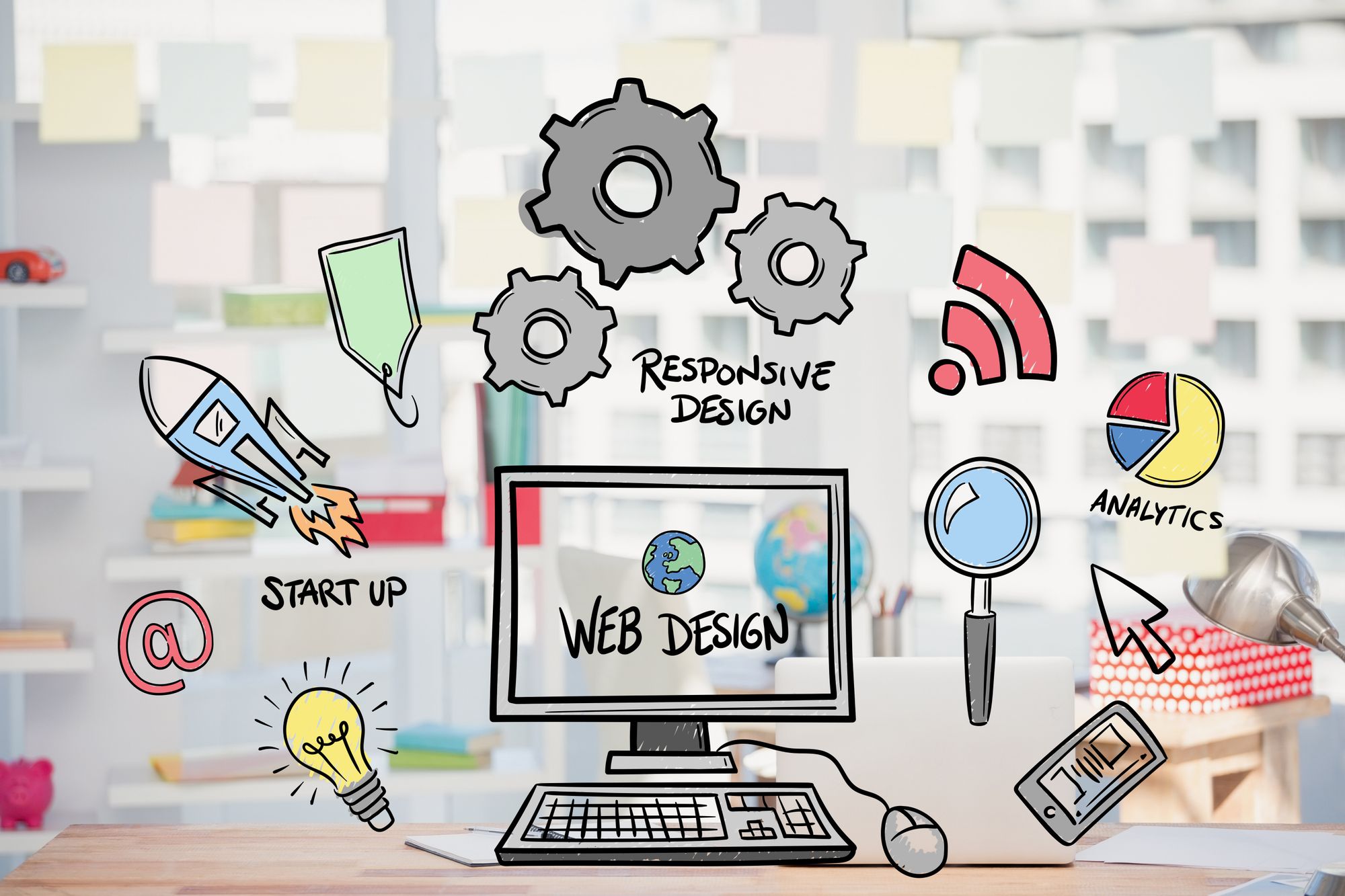Imaginative Internet Design Solutions for Modern and Engaging Internet Sites
In the world of internet layout, the search of modern-day and appealing services has become significantly essential for companies intending to capture customer interest. By incorporating vibrant color plans, interactive components, and receptive designs, designers can produce experiences that not just reverberate with customers yet additionally improve brand name identification.
Accepting Bold Color Plans
In internet style, the calculated usage of bold color pattern can significantly enhance user interaction and brand name identification. By utilizing vivid hues, designers can develop aesthetically striking sites that record interest and cultivate a remarkable experience. A well-chosen shade combination not only mirrors a company's values but also stimulates details emotions that can influence customer behavior.
Bold shades can be utilized to guide individuals' attention to key components such as phone call to action, improving conversion rates. For example, using contrasting colors for buttons and links can make these aspects stand out, triggering customers to connect quicker. In addition, a natural color design throughout the site reinforces brand acknowledgment, creating a feeling of knowledge and depend on among site visitors.
Nevertheless, it is important to balance bold colors with adequate white room to prevent overwhelming users. Reliable use typography also matches bold colors, ensuring readability while keeping visual appeal. Ultimately, accepting vibrant color design in web layout not only elevates aesthetic quality but likewise plays an integral duty in achieving tactical organization purposes, making it an important consideration for contemporary web growth.

Making Use Of Interactive Aspects
Interactive aspects are important in modern web style, as they significantly improve user involvement and develop an extra dynamic surfing experience. By including features such as computer animations, hover impacts, and clickable elements, web sites can motivate customers to discover web content a lot more completely and return for future check outs.

Micro-interactions, such as refined animations when a switch is clicked or a kind is submitted, can also improve the customer experience by providing immediate responses. These little information can make the internet site really feel even more receptive and alive, fostering a sense of connection between users and the website.
Additionally, gamification aspects, such as benefits for completing certain activities, can motivate customers to engage with the web content much more deeply. By attentively integrating these interactive elements, web designers can create an unforgettable and engaging on-line experience that resonates with customers and motivates them to return.
Carrying Out Receptive Style
Carrying out responsive design is vital in today's multi-device landscape, ensuring that sites give an optimum check this watching experience across numerous screen dimensions. As customers progressively access the net via mobile phones, tablets, and desktops, a one-size-fits-all method is no much longer practical. Receptive layout permits seamless navigation and interaction, adapting format and web content to fit the tool being used.
Key concepts of receptive layout include liquid grids, versatile pictures, and media questions. Media inquiries assist in the application of different styles based on the tool's qualities, such as size, elevation, or resolution, allowing designers to customize the user experience successfully.
Moreover, responsive style enhances SEO performance, as search engines prefer mobile-friendly sites. By carrying out receptive style, services not just enhance customer satisfaction and engagement but additionally enhance their reach in a competitive electronic landscape. As innovation proceeds to develop, adopting responsive style has actually ended up being an essential practice for any modern and engaging web site.
Incorporating Multimedia Material
Multimedia material plays an important function in developing interesting and dynamic internet experiences that catch customers' focus and boost understanding. By incorporating message, pictures, sound, and video clip, websites can navigate to this website supply a richer narrative that charms to numerous discovering styles and choices. This combination not only bolsters customer involvement but also help in conveying intricate ideas succinctly.
Including top quality pictures and infographics can damage up textual content, making it more absorbable. Video clip tutorials and discussions can provide in-depth insights that fixed web content may not completely interact. Audio components, such as podcasts or background music, can also enhance the environment of an internet site, creating a more immersive experience.
In addition, the strategic usage of multimedia can enhance SEO performance, as internet search engine favor varied material kinds, enhancing visibility. It is critical to ensure that multimedia components do not impede web page lots times, as this can lead to individual frustration. By stabilizing multimedia integration with performance factors to consider, internet developers can create aesthetically appealing and functional internet sites that resonate with individuals, cultivating a much deeper link and motivating return visits.
Focusing On Customer Experience

To accomplish an ideal user experience, developers must concentrate on a number of crucial concepts. First, responsive design is important; web sites need to adjust effortlessly to various devices and screen dimensions. This availability makes sure that users can engage with content despite their selected system. Clearness in layout and power structure is crucial. Clear phone call to action, understandable typography, and organized web content guide customers, decreasing cognitive load.
Ultimately, prioritizing UX not only boosts user fulfillment yet additionally drives interaction and conversion rates, making it an essential aspect of modern web layout strategies. By positioning users at the facility of style initiatives, internet sites can create long lasting, positive impacts that urge redirected here return sees.
Verdict
To conclude, contemporary website design services that emphasize strong color pattern, interactive elements, responsive layout, and multimedia content dramatically improve customer interaction and fulfillment. Focusing on user experience via clear formats and constant responses additionally adds to improved conversion rates. By taking on these techniques, websites can effectively captivate site visitors and strengthen brand name identification, inevitably leading to a more dynamic and engaging on-line existence. The assimilation of these style concepts is essential for accomplishing contemporary internet layout goals.